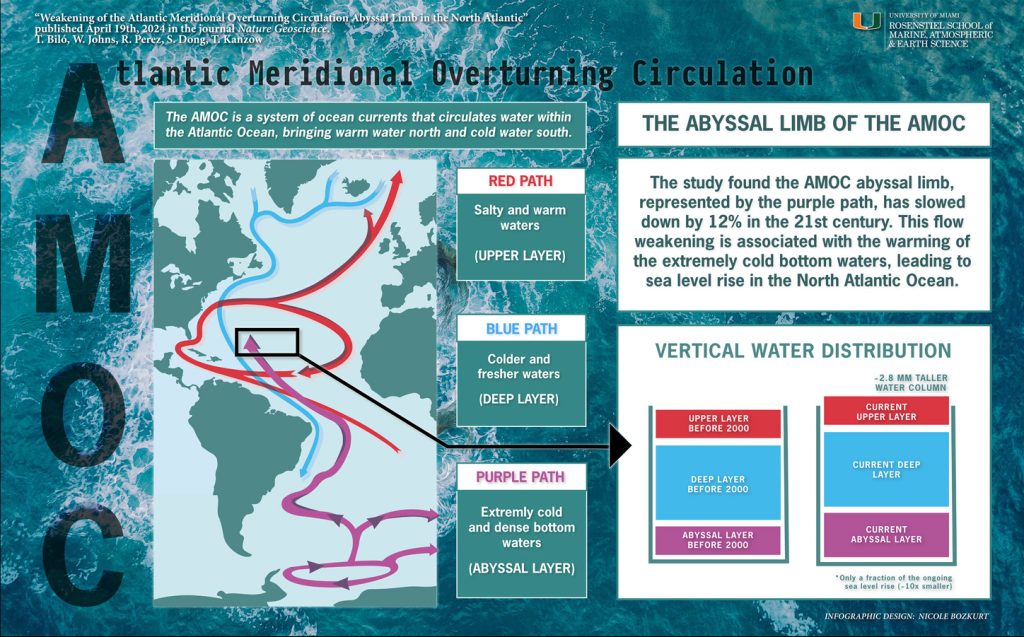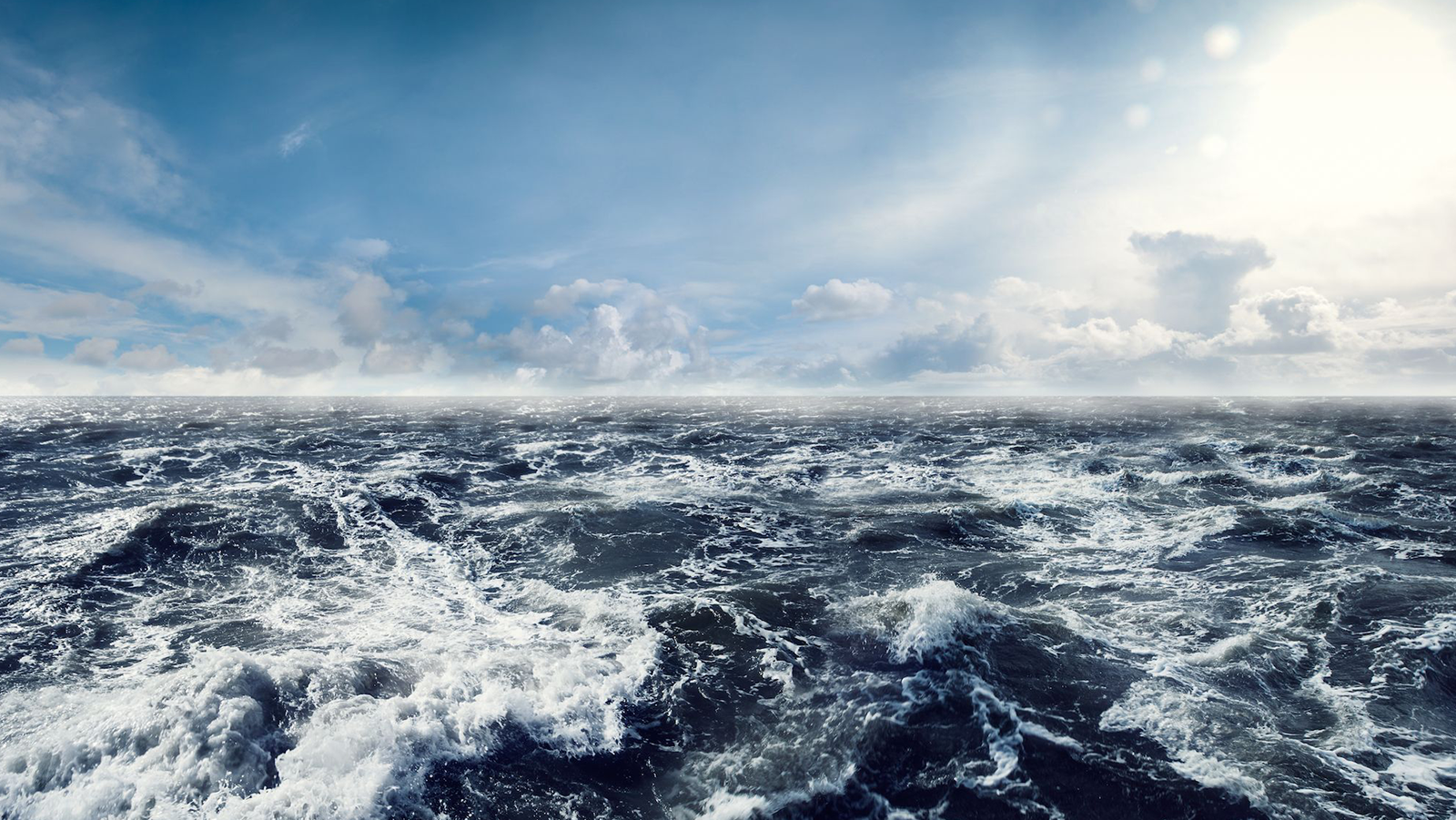Just in! A new study finds that the Atlantic Meridional Overturning Circulation (AMOC) abyssal limb in the North Atlantic has weakened over the past two decades, contributing to sea level rise in the region.
The AMOC consists of an upper cell and a deep sea or abyssal cell that sits underneath. The upper cell transports warm water from the subtropical South Atlantic Ocean across the equator northward toward high latitudes in the North Atlantic, where it cools, sinks, and flows equatorward as cold deep water. It sits atop a cell of colder, denser water at the ice edge of Antarctica known as the abyssal cell. These waters flow north along the seafloor into the North Atlantic where they slowly rise and mix with other waters that flow back to the south. Together, these cells carry a maximum of 25% of the net global ocean and atmosphere energy (heat) transport.

Antarctic Bottom Water is the coldest, densest water mass of the oceans, found in the Southern Ocean surrounding Antarctica. The abyssal limb of the AMOC redistributes heat and carbon as it carries Antarctic Bottom Water from the Southern Ocean towards the northern hemisphere. Using mooring observations and hydrographic data from multiple sources in the North Atlantic, the study found that the northward transport of Antarctic Bottom Water at 16°N weakened by about 12% during 2000-2020. This weakening of the abyssal cell is associated with an observed warming throughout the deep Western Atlantic Ocean, contributing to an increase in deep sea heat content and, hence, sea level rise in the region.

The study also analyzed a vast collection of hydrographic (i.e., temperature, salinity, and pressure) measurements between 24.5°N-26.6°N collected from the late 1990s and early 2020s. The analysis confirmed that the Antarctic Bottom Water layer in the North Atlantic shrunk over a two-decade period, leading to an average deep sea warming rate of about 1 m°C/year or about half of the warming trend observed in the South Atlantic. This suggests a dilution of the signal as Antarctic Bottom Water spreads northwards.
“Although this number might seem small, the areas affected by this warming span thousands of miles in the north-south and east-west directions in the deep sea (between 4000 – 6000 meters or 2.5 – 3.7 miles depth). As a result, there is a significant increase in deep sea ocean heat content, contributing to local sea level rise due to the thermal expansion of the water. Antarctic Bottom Water warming in the western North Atlantic is associated with 2.8 mm sea level rise from 2000-2020,” said Tiago Bilo, lead author of the study and University of Miami Cooperative Institute of Marine & Atmospheric Studies (CIMAS) scientist.
The results of this study reinforce the idea that even the most remote areas of the world’s oceans are not untouched by human activity. Environmental changes around Antarctica due to human activity are causing a weakening of the deep sea circulation and a rise in sea level in the North Atlantic Ocean. Additionally, the observational analysis used in this study supports numerical models that show human activity could potentially cause circulation changes to the entire ocean.
“NOAA and partners have been monitoring the AMOC and boundary current variability at multiple latitudes using long-term mooring arrays in the North and South Atlantic. This study is one effort to use additional information from those observing systems to study long-term deep and abyssal temperature changes,” said Renellys Perez, NOAA Oceanographer and a co-author of the study.
The study came as a result of the NOAA-funded (Climate Program Office, Global Ocean Monitoring and Observing program; and Atlantic Oceanographic Meteorological Laboratory) project entitled “Innovative analysis of deep and abyssal temperatures from bottom-moored instruments,” aka DeepT, to harness data from AMOC observational programs for examining deep and abyssal water mass changes. Measurements from several observational programs such as, MOVE, GO-SHIP, WBTS, Rapid, Deep Argo, etc. were also analyzed. Multiple partners collaborated on the study, including researchers at NOAA’s AOML, the University of Miami’s CIMAS, the University of Miami’s Rosenstiel School, and the Alfred-Wegener-Institute Helmholtz Center for Polar and Marine Research in Germany.
